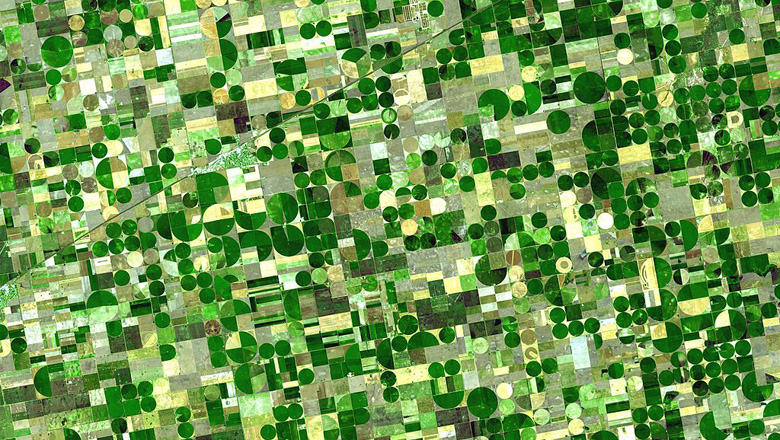
Satellite image of crops growing in Kansas. (Photo: NASA)

Satellite image of crops growing in Kansas. (Photo: NASA)
From the beginning, I was always interested in food. As a kid, I studied recipes from my mom’s old cookbooks, and revered Alton Brown as my culinary idol. When I grew older, I got into the politics and history of food, learning from food writers like Michael Pollan, Mark Bittman and Marion Nestle. When I got to college, I knew that business was my field, but had to find some passion on which to ground it. Finally, the idea clicked. I would pair my management skills with my culinary knowledge.
At this stage, it was more than just about cooking. I wanted to figure out the impact food has on the world around us, and search for new ideas about how food shapes our economies, environment, health and, ultimately, survival. It’s something we experience everyday, yet is facing a growing dilemma.
By 2050, the world population will stand at 9.7 billion. That’s a third more mouths to feed. The solution may seem to be a no-brainer — just raise the amount of food grown globally — a 70% increase to be exact. But it doesn’t happen this easily. Studies have shown that there is only 11 percent of arable land left in the world, and that almost all land expansion would occur in developing countries, where most of the global demand for food will come from. These heightening pressures for food production, inequitable food distribution and an impending environmental crisis make for a multi-dimensional problem at our hands. And the clock is ticking.
This complex debacle is what drew me to the Global Food Challenge. Over the past year, I’ve taken a journey to explore these philosophies, and met people who strive to make a difference for food security in their community. I’ve learned many things along the way, and questioned the feasibility of that seemingly obvious solution mentioned above. If increasing food production is not a sustainable possibility, why don’t we look at the way it’s distributed world-wide? What if food waste is the real culprit for food inequality?
To tackle this issue, you have to look at the way we value food. With the amount of food that is thrown out each year, it’s easy to say that we do give the respect that it deserves. We let produce be ridiculed for its size and appearance; unattainable aesthetic standards for fruits and vegetables, food safety misguidance, and outright ambiguity on sell-by dates have created hysteria over a bruised apple. I believe that by changing perspectives on food, we can help solve this future enigma.
(Sources: “How to Feed the World 2050,” UN-FAO; “Feeding 9 Billion,” National Geographic Magazine)
—
ABOUT THE PROJECT
This is final piece in a six-part series. Waste Not Wednesday is a community engagement project created by Ayse Muratoglu, a 2015-2016 Emerging Leader for Food Security for the Land O’Lakes Global Food Challenge Program. The yearlong program takes 10 college sophomores who will work with Land O’Lakes experts to explore issues of food security, and find ways to feed the world. To learn more about the Global Food Challenge, join the conversation at http://foodchallenge.landolakesinc.com/